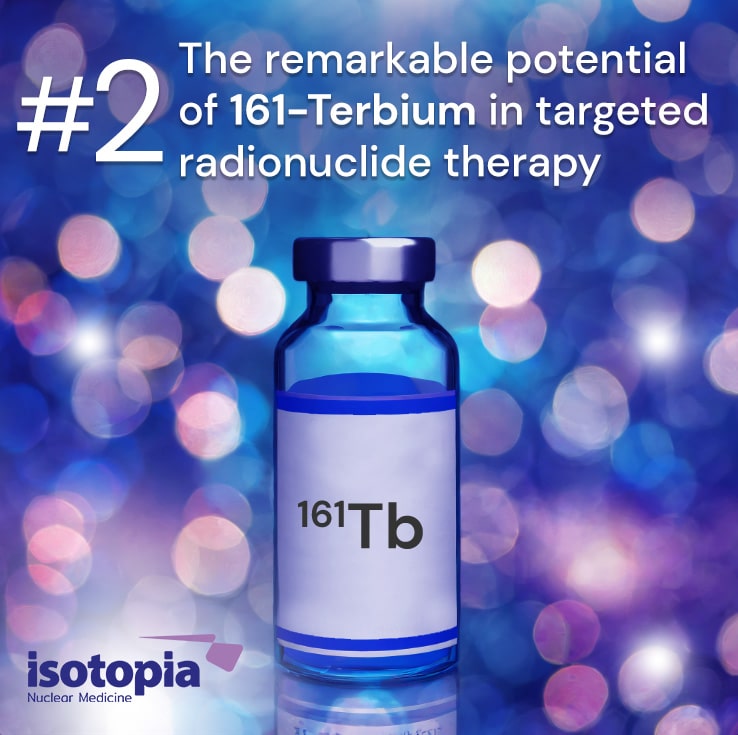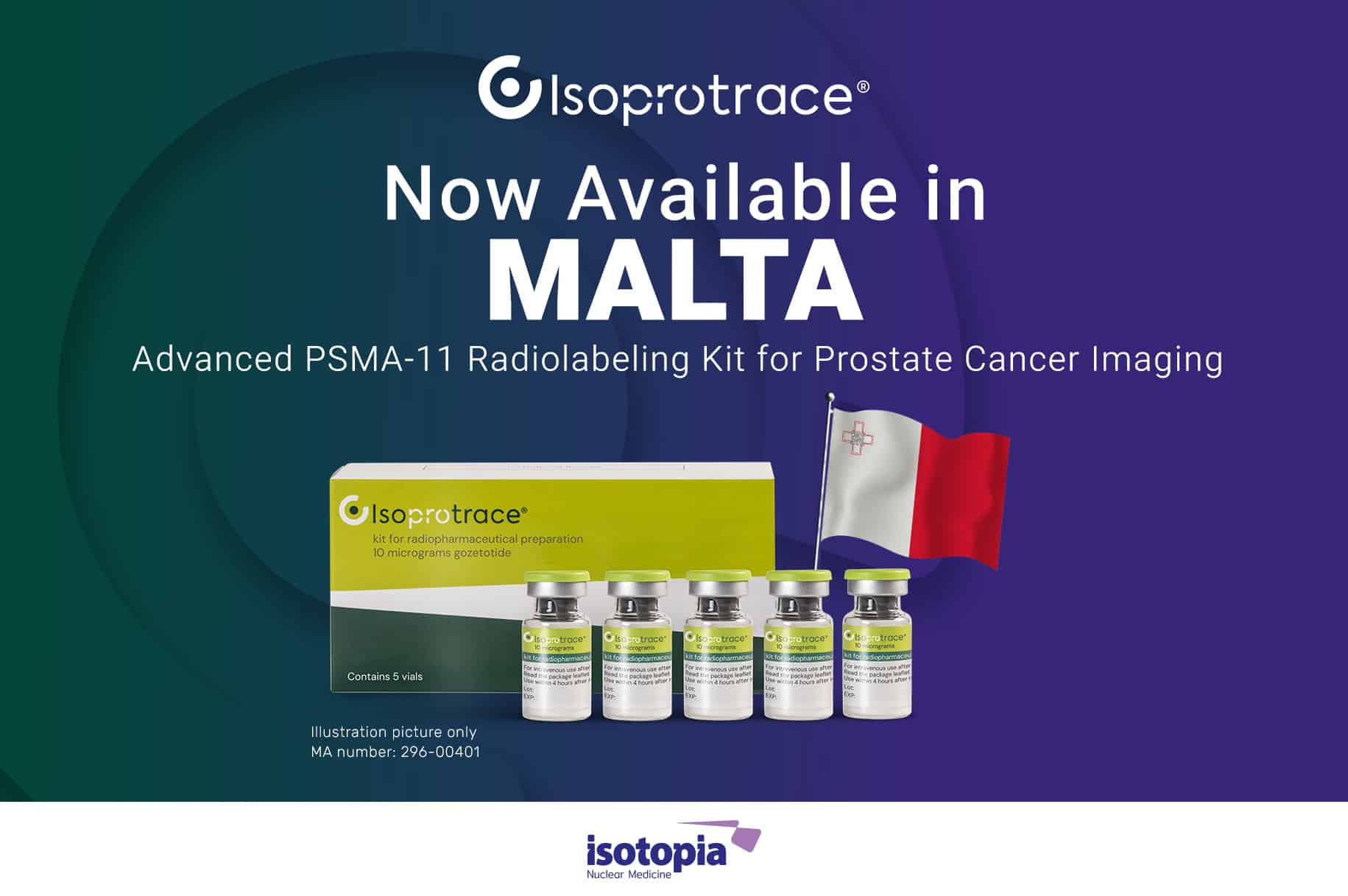PRRT (Peptide Receptor Radionuclide Therapy) is a type of targeted cancer therapy that treats neuroendocrine tumors (NETs) by delivering radioactivity directly to the tumor cells. PRRT works by using a synthetic form of somatostatin, a hormone that regulates the secretion of other hormones, and attaching it to radioactive isotopes. Dotatate, which is the synthetic somatostatin usually used, binds to somatostatin receptor (SSTR) subtype 2, which is over-expressed on the surface of NET cells, allowing the radionuclide to enter and damage the cell’s DNA. The most common radionuclide used in PRRT is Lutetium-177 (Lu-177), which is FDA-approved for gastroenteropancreatic NETs, such as those in the pancreas, stomach, and intestines [1]. PRRT is not a cure, but it can effectively slow or stop tumor growth and improve the length and quality of life for people with NETs.
PRRT is usually reserved for people who are not candidates for surgery or who have not responded to other treatments, such as hormone therapy with Somatostatin alone. PRRT is also dependent on the presence of somatostatin receptors on the tumor cells, which can be determined by a PET-CT scan with 68-Ga-Dotatate [2]. PRRT is administered intravenously in several cycles, usually six to 10 weeks apart. The treatment may cause certain side effects, such as nausea, vomiting, fatigue, and kidney damage. Therefore, PRRT requires careful monitoring and follow-up by a multidisciplinary team of specialists in nuclear medicine and oncology [1].
Regarding the use of 161-Terbium, several preclinical and clinical studies have been conducted to evaluate the feasibility and efficacy of 161-Tb-DOTATOC or 161-Tb-DOTATATE for PRRT of NETs. In one such study, for example, Baum et al. reported the first-in-human application of 161-Tb-DOTATOC in two patients with metastatic NETs and demonstrated the high quality and sensitivity of SPECT/CT imaging using 161-Tb-DOTATOC, as well as its favorable biodistribution and safety profile [3]. Favaretto et al. developed a fully automated disposable cassette system for the production and quality control of 161-Tb-DOTATOC and showed its suitability for clinical use [4]. Schibli et al. compared the therapeutic efficacy of 161-Tb-DOTATOC and 177-Lu-DOTATOC in tumor-bearing mice and found that 161-Tb-DOTATOC was more effective in reducing tumor growth and prolonging survival [5]. Müller et al. also compared the therapeutic efficacy of 161-Tb-DOTA-LM3 (SSTR antagonist) and 177-Lu-DOTA-LM3 in tumor-bearing mice and confirmed the superior effect of 161-Tb-DOTA-LM3 [6].
These studies suggest that 161-Tb-DOTATOC or 161-Tb-DOTATATE may be a promising option for PRRT of NETs, with potential advantages over 177-Lu-DOTATOC or 177-Lu-DOTATATE in terms of tumor dose delivery.
However, more clinical trials are needed to confirm these findings and to establish the optimal dose and schedule of 161Tb-DOTA-LM3, 161-Tb-DOTATOC or 161-Tb-DOTATATE for PRRT of NETs [7].
References:
- Becx MN, Minczeles NS, Brabander T, de Herder WW, Nonnekens J, Hofland J. A Clinical Guide to Peptide Receptor Radionuclide Therapy with 177Lu-DOTATATE in Neuroendocrine Tumor Patients. Cancers (Basel). 2022 Nov 24;14(23):5792. doi: 10.3390/cancers14235792. PMID: 36497273; PMCID: PMC9737149.
- Thomas A. Hope, Martin Allen-Auerbach, Lisa Bodei, Jeremie Calais, Magnus Dahlbom, Lisa K. Dunnwald, Michael M. Graham, Heather A. Jacene, Courtney Lawhn Heath, Erik S. Mittra, Chadwick L. Wright, Wolfgang P. Fendler, Ken Herrmann, David Taïeb, Andreas Kjaer. SNMMI Procedure Standard/EANM Practice Guideline for SSTR PET: Imaging Neuroendocrine Tumors. Journal of Nuclear Medicine Feb 2023, 64 (2) 204-210; DOI: 10.2967/jnumed.122.264860
- Baum RP, Singh A, Kulkarni HR, Bernhardt P, Rydén T, Schuchardt C, Gracheva N, Grundler PV, Köster U, Müller D, Pröhl M, Zeevaart JR, Schibli R, van der Meulen NP, Müller C. First-in-Humans Application of 161Tb: A Feasibility Study Using 161Tb-DOTATOC. J Nucl Med. 2021 Oct;62(10):1391-1397. doi: 10.2967/jnumed.120.258376. Epub 2021 Feb 5. PMID: 33547209; PMCID: PMC8724898.
- Favaretto C, Grundler PV, Talip Z, Landolt S, Sepini L, Köster U, Müller C, Schibli R, Geistlich S, van der Meulen NP. 161Tb-DOTATOC Production Using a Fully Automated Disposable Cassette System: A First Step Toward the Introduction of 161Tb into the Clinic. J Nucl Med. 2023 Jul;64(7):1138-1144. doi: 10.2967/jnumed.122.265268. Epub 2023 May 18. PMID: 37201956; PMCID: PMC10315698.
- Schibli R, Müller C, van der Meulen NP, et al. Simultaneous Auger e- and β¯-Particle Therapy of Metastasized NET Using 161 Tb-DOTATOC: Preclinical Results from an Ongoing Study at PSI. Poster presented at: 2020 Annual Meeting on Nuclear Medicine; November 7-14; Virtual.
- Müller C, Singh A, Umbricht CA, et al. Combination of Terbium-161 with somatostatin receptor antagonists for the treatment of neuroendocrine neoplasms. Eur J Nucl Med Mol Imaging. 2021;48(11):3434-3445.
- Combined Beta-Plus Auger Electron Therapy Using a Novel Somatostatin Receptor Subtype 2 Antagonist Labelled with Terbium-161 (161Tb-DOTA-LM3) (Beta plus). https://clinicaltrials.gov/study/NCT05359146

Haim Golan
MD MSc
Chief Medical Officer
Isotopia Molecular Imaging LTD





